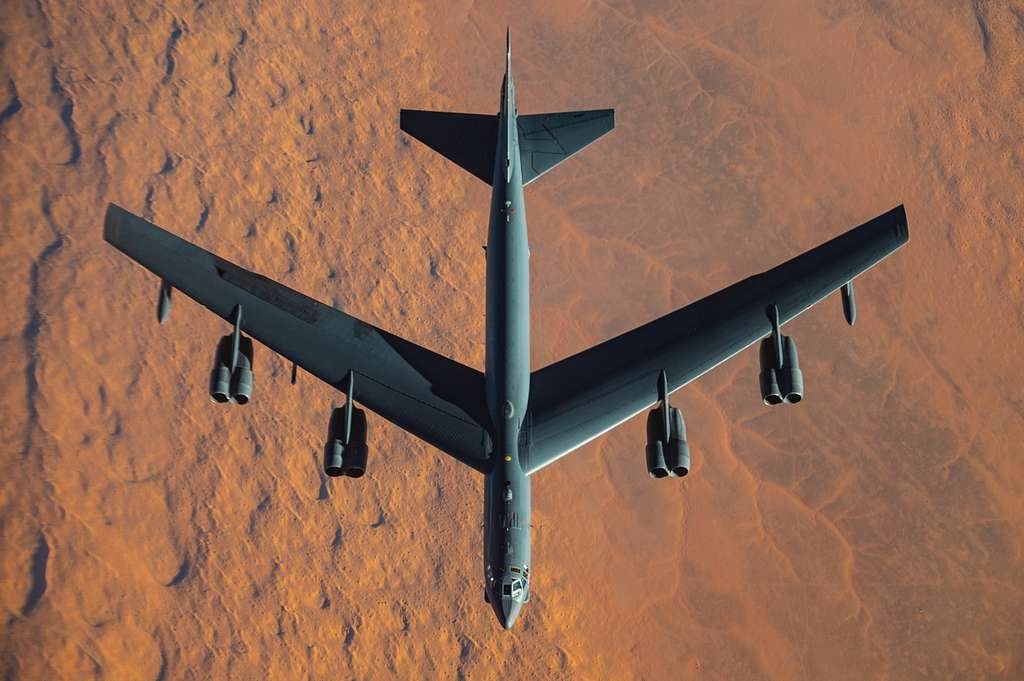The Boeing B-52 Stratofortress has carved its name deeply into the annals of military aviation history. Known for its impressive size and longevity, the B-52 continues to stand as a pillar of American air power. This article dives into some of the most fascinating aspects of this iconic bomber that you might not yet know
The Origin Story of the B-52
Developed in the early 1950s, the Boeing B-52 was designed to meet the USAF’s demands for a long-range, high-altitude strategic bomber. It first took to the skies in April 1952, setting the stage for a new era of aerial warfare.

Design Innovations
The B-52 features a distinctive swept-wing design, which significantly enhances its high-altitude performance. Its eight turbojet engines, a novel feature at the time of its inception, allow it to carry a substantial payload over long distances without refueling.
Operational History
The B-52 has been an integral part of the U.S. military’s arsenal for over six decades, participating in numerous conflicts and missions around the globe.
Cold War Service
During the Cold War, the B-52 was a central player in America’s strategy of deterrence, performing countless airborne patrols loaded with nuclear weapons as a part of Operation Chrome Dome.
Modern Conflicts
In recent years, the B-52 has been deployed in various operations in the Middle East and Asia, demonstrating its adaptability to modern warfare and precision strike capabilities.
Amazing Facts About the B-52
There are many remarkable, lesser-known facts about the B-52 that highlight its exceptional service record and capabilities.
Longevity and Upgrades
One of the most astounding facts about the B-52 is its longevity. The aircraft has received numerous upgrades over the decades, from avionics to armaments, ensuring it remains effective in contemporary combat scenarios.
Record-Breaking Missions
The B-52 holds records for some of the longest combat missions ever flown, such as during Operation Desert Storm, where it flew non-stop from Louisiana to Iraq, delivered its payload, and returned without landing.
The B-52’s Role in Nuclear Deterrence
As a key component of the United States’ strategic nuclear forces, the B-52 has a significant role in nuclear deterrence. Its ability to carry nuclear and conventional weapons makes it a versatile asset in maintaining global peace and stability.
Armament and Load Capacity
The B-52 can carry up to 70,000 pounds of weapons, including free-fall bombs, precision-guided missiles, and nuclear weapons, showcasing its formidable capabilities.
Strategic Importance
The strategic importance of the B-52 extends beyond its sheer firepower. Its presence serves as a powerful deterrent against potential adversaries, reinforcing the security and interests of the United States and its allies.
The Future of the B-52
Despite its age, the B-52 is expected to remain in service until at least 2040, with plans for further upgrades and improvements.
Upcoming Upgrades
Future upgrades for the B-52 include enhancements in digital connectivity, weapons systems, and radar technologies, which will enable it to operate effectively in the digital battlefield.
Operational Outlook
The B-52’s continued operational viability is testament to its robust design and strategic value. It is expected to outlast several newer bomber models, remaining a cornerstone of the U.S. bomber fleet.
Conclusion
The Boeing B-52 Stratofortress is not just an aircraft; it is a symbol of enduring strength and adaptability. Its storied past and promising future continue to make it one of the most interesting and significant aircraft in the history of aerial warfare.
More on Aviation History
Was The MiG-21 Better than the F-4 Phantom?
The Tiger Moth, a Remarkable Aircraft in the Field of Aviation Training

